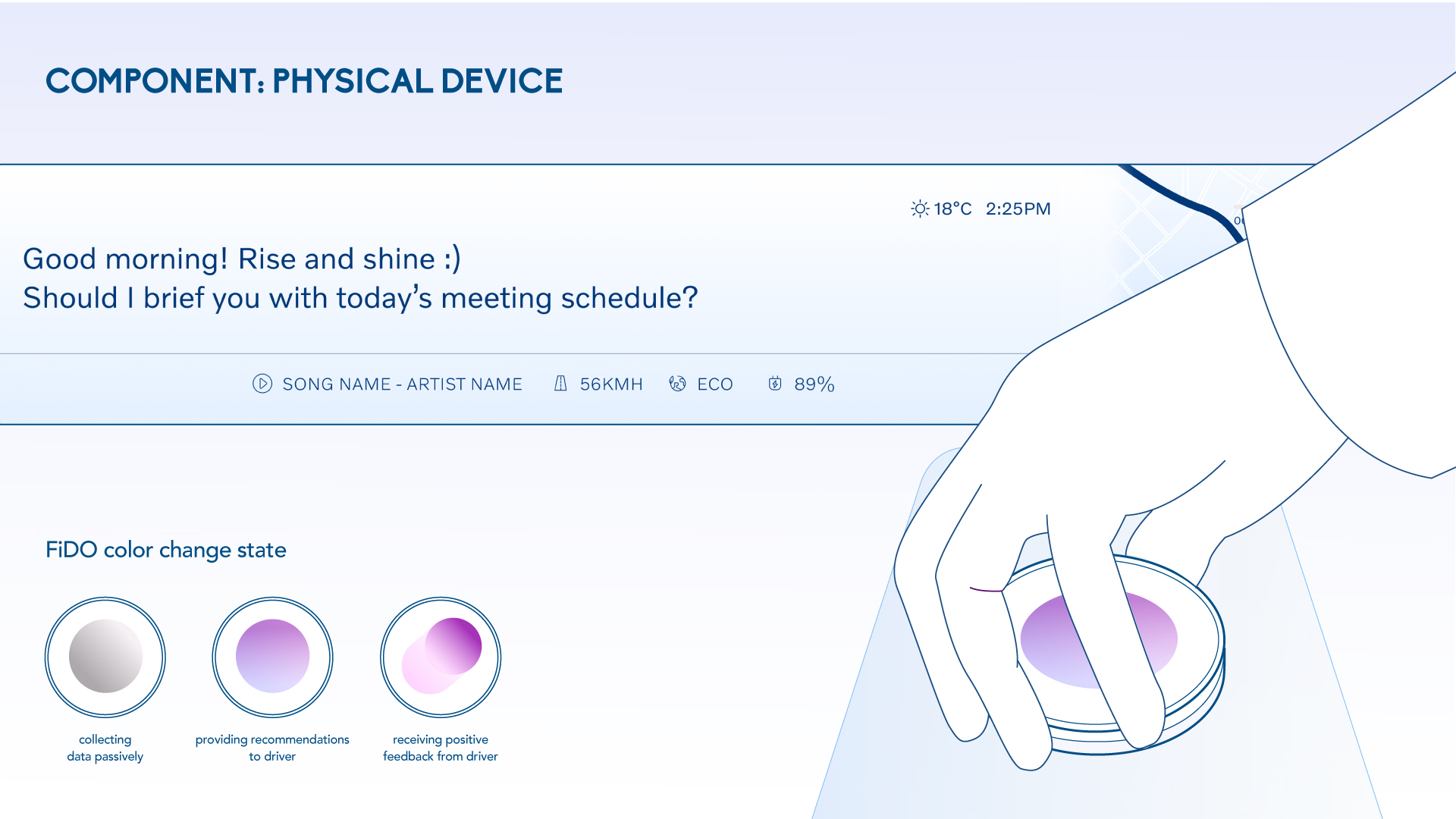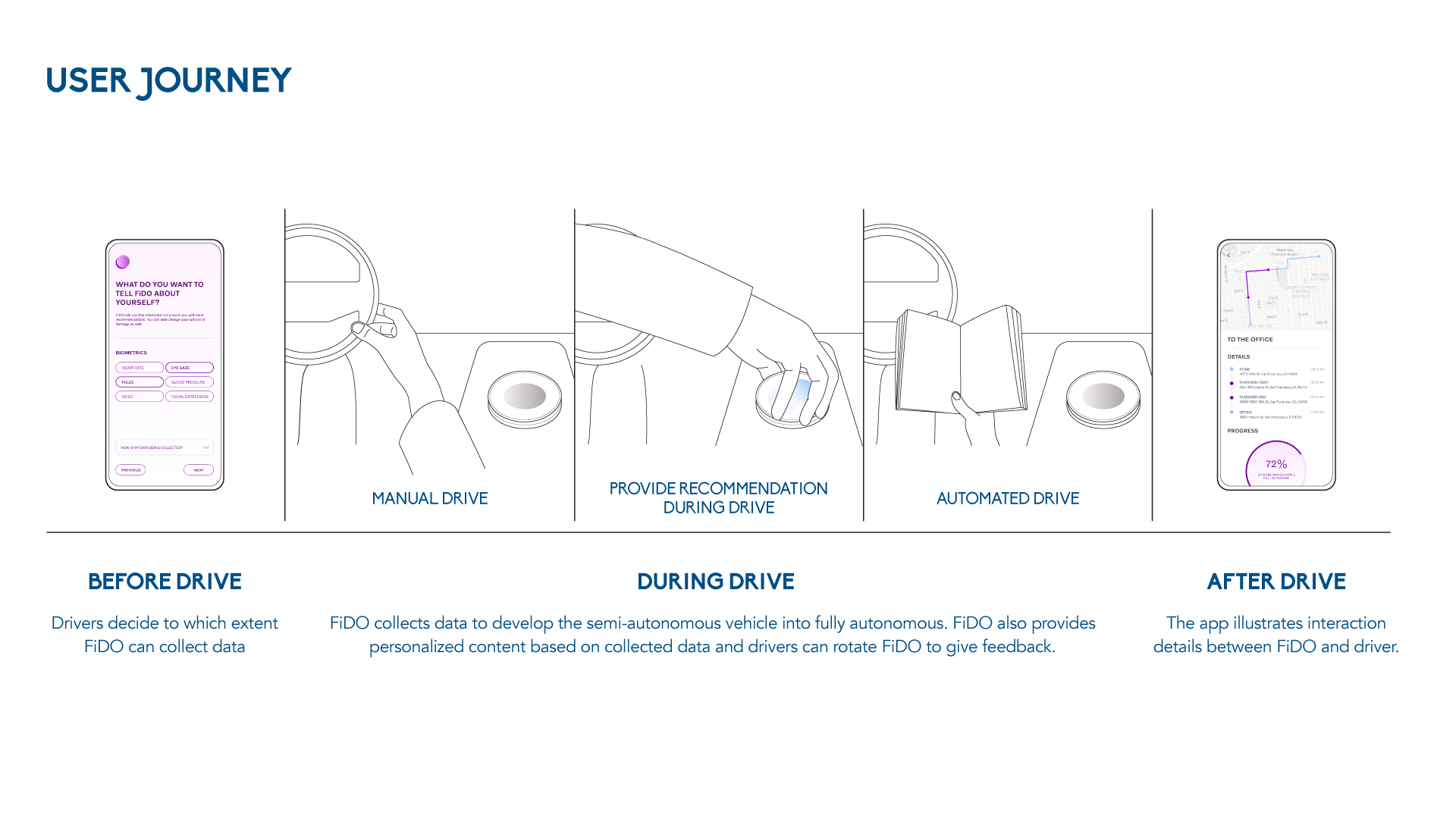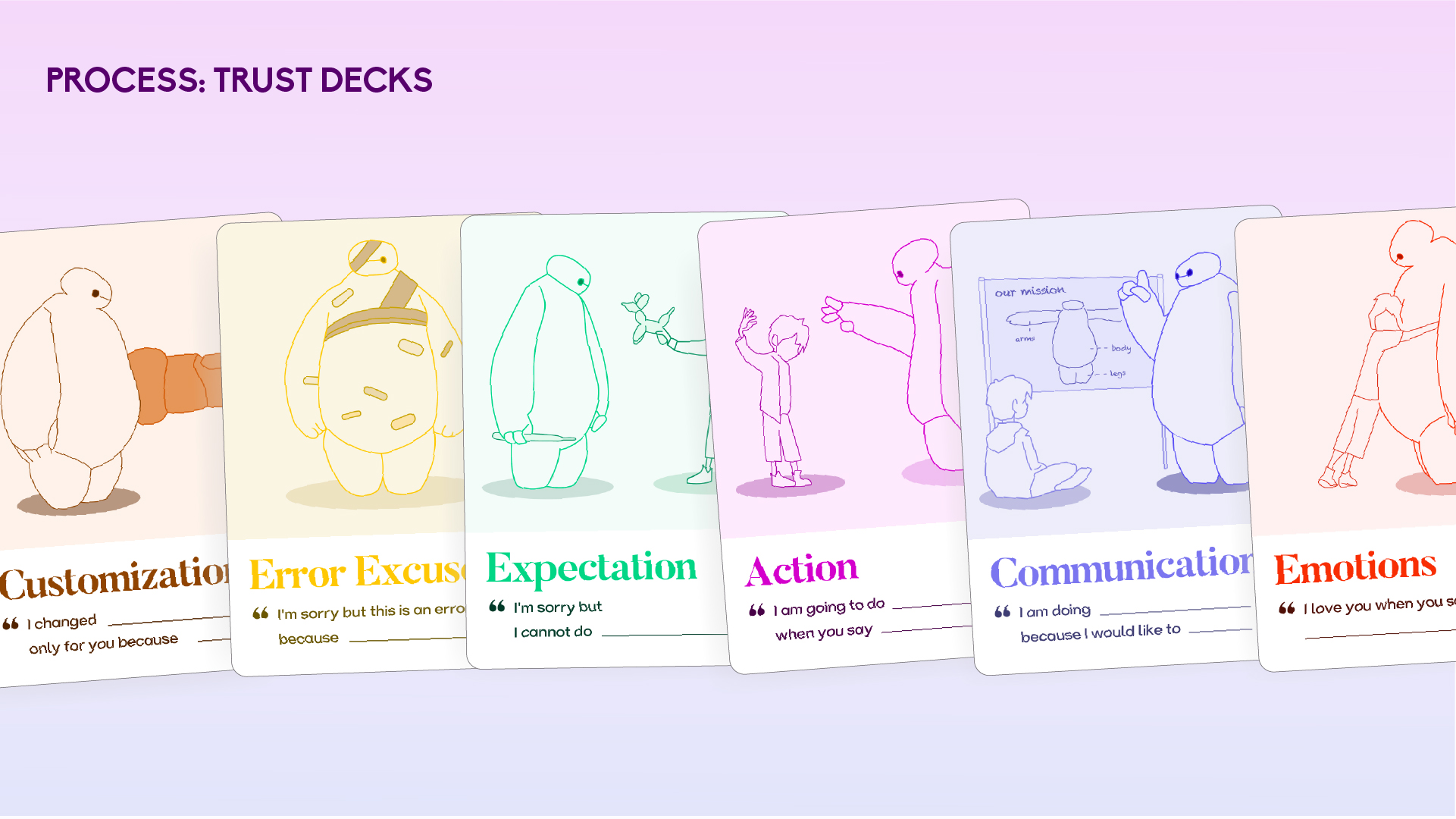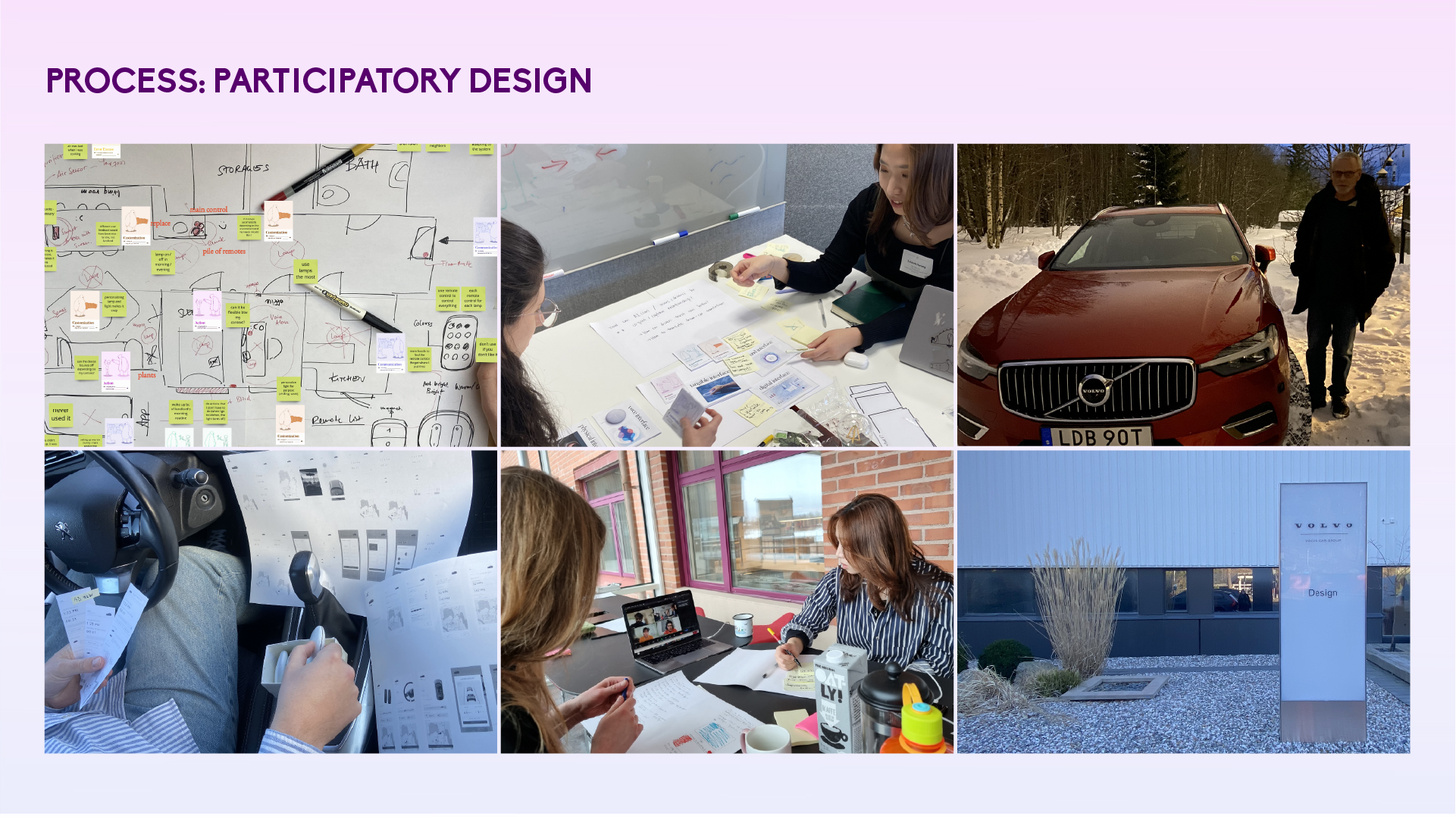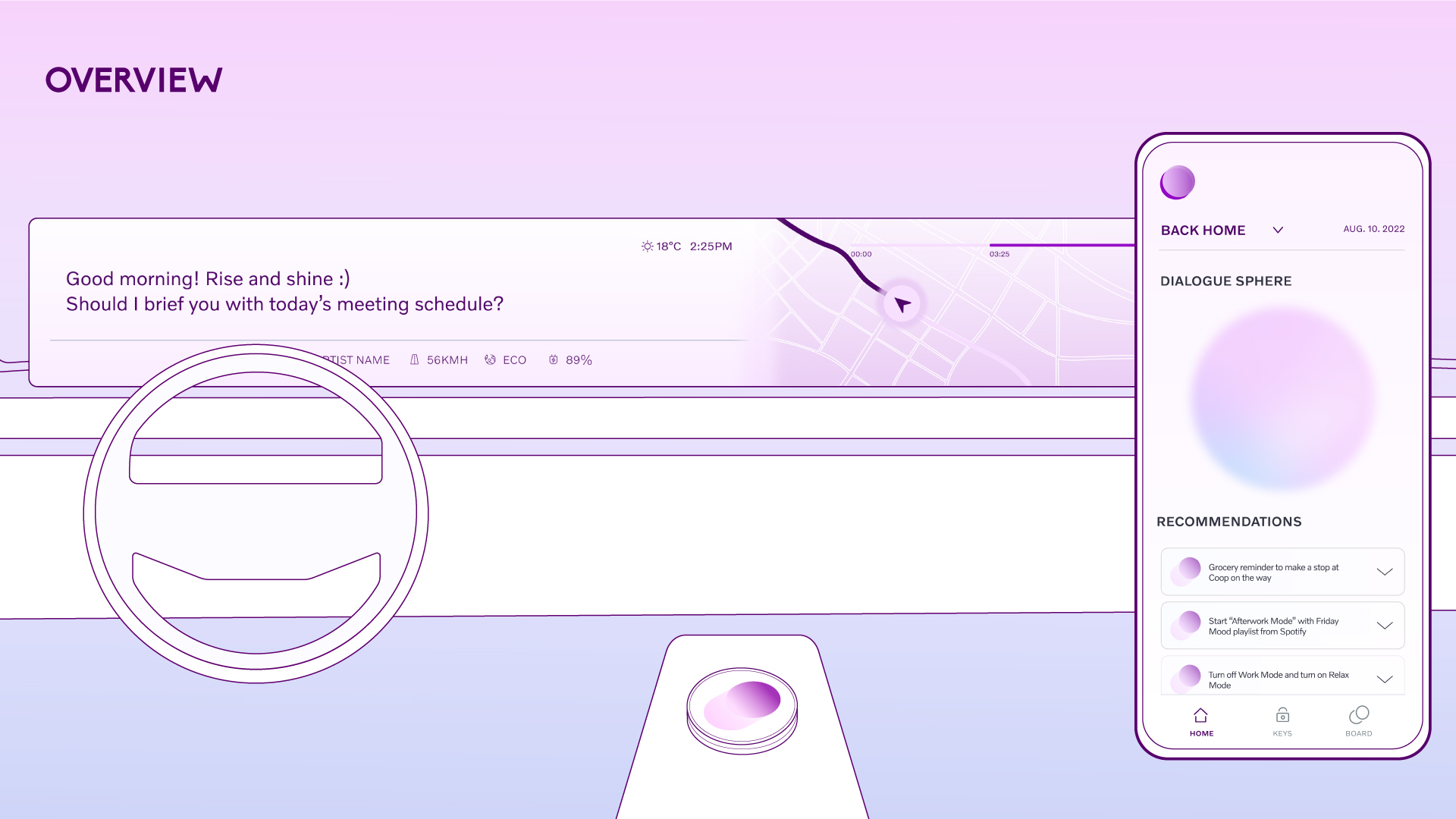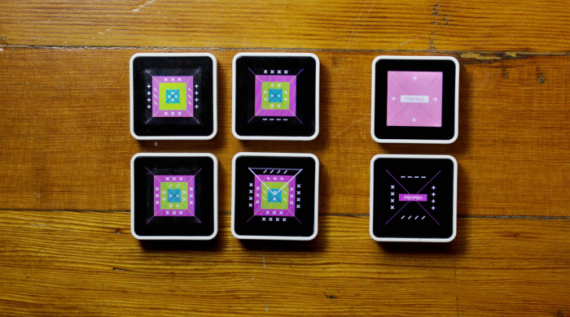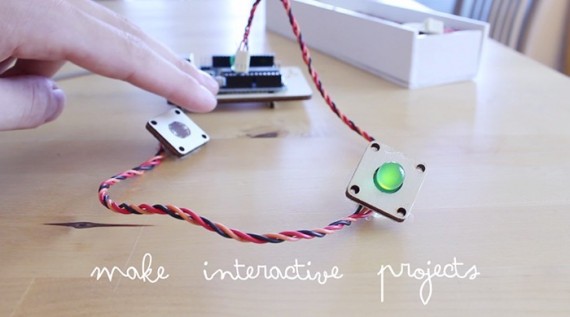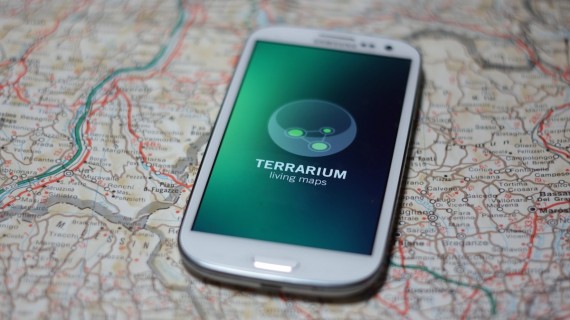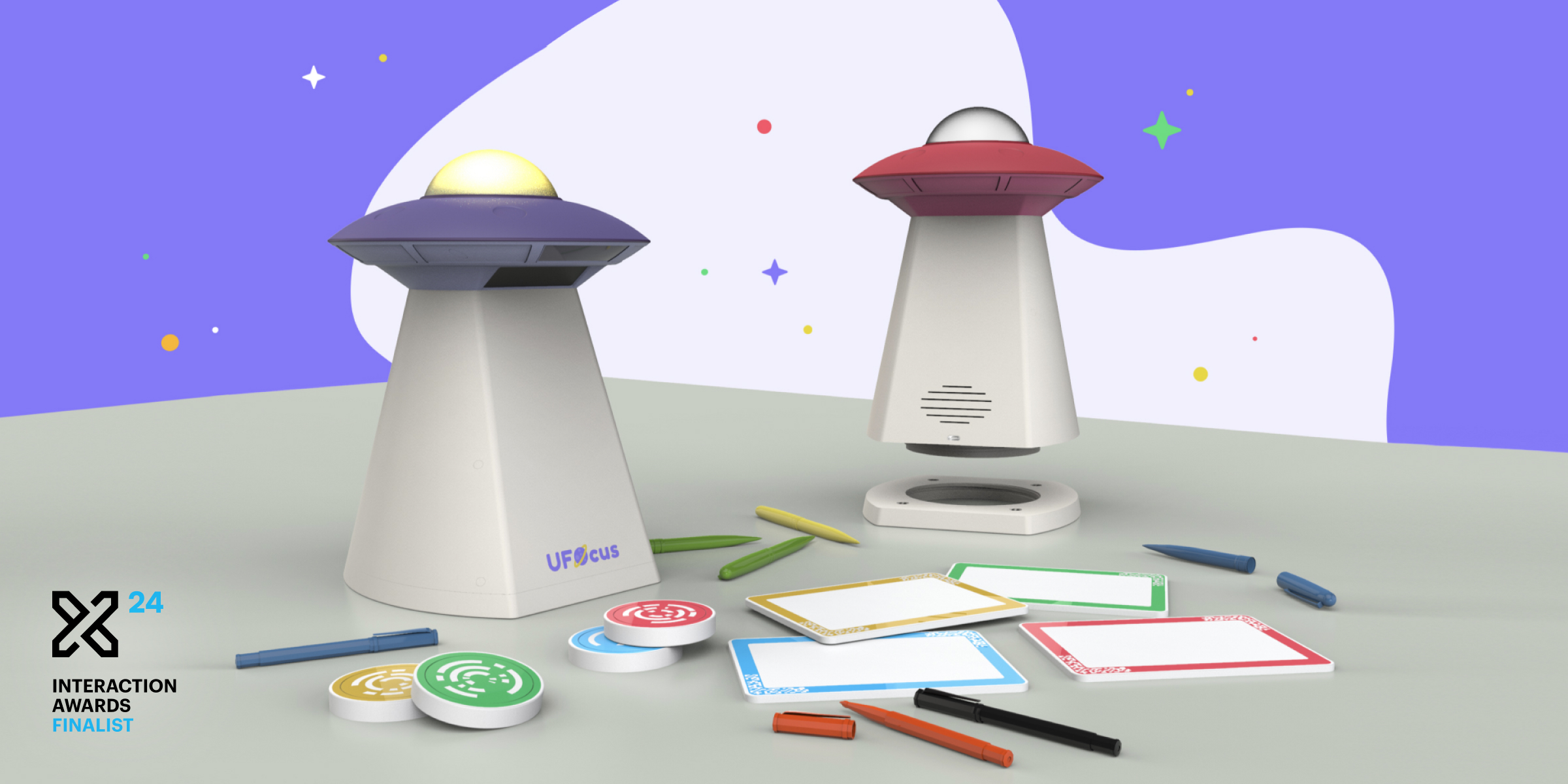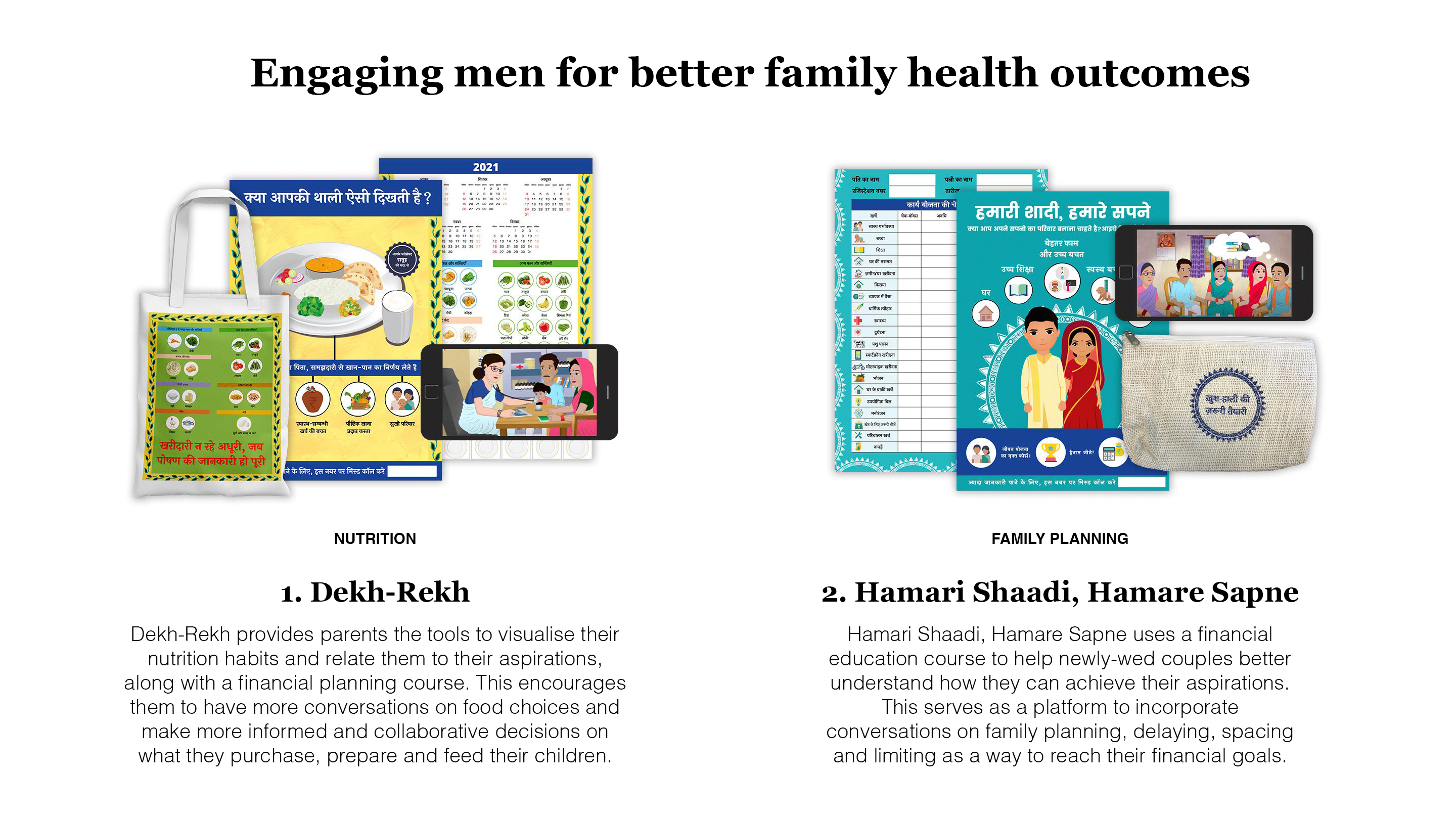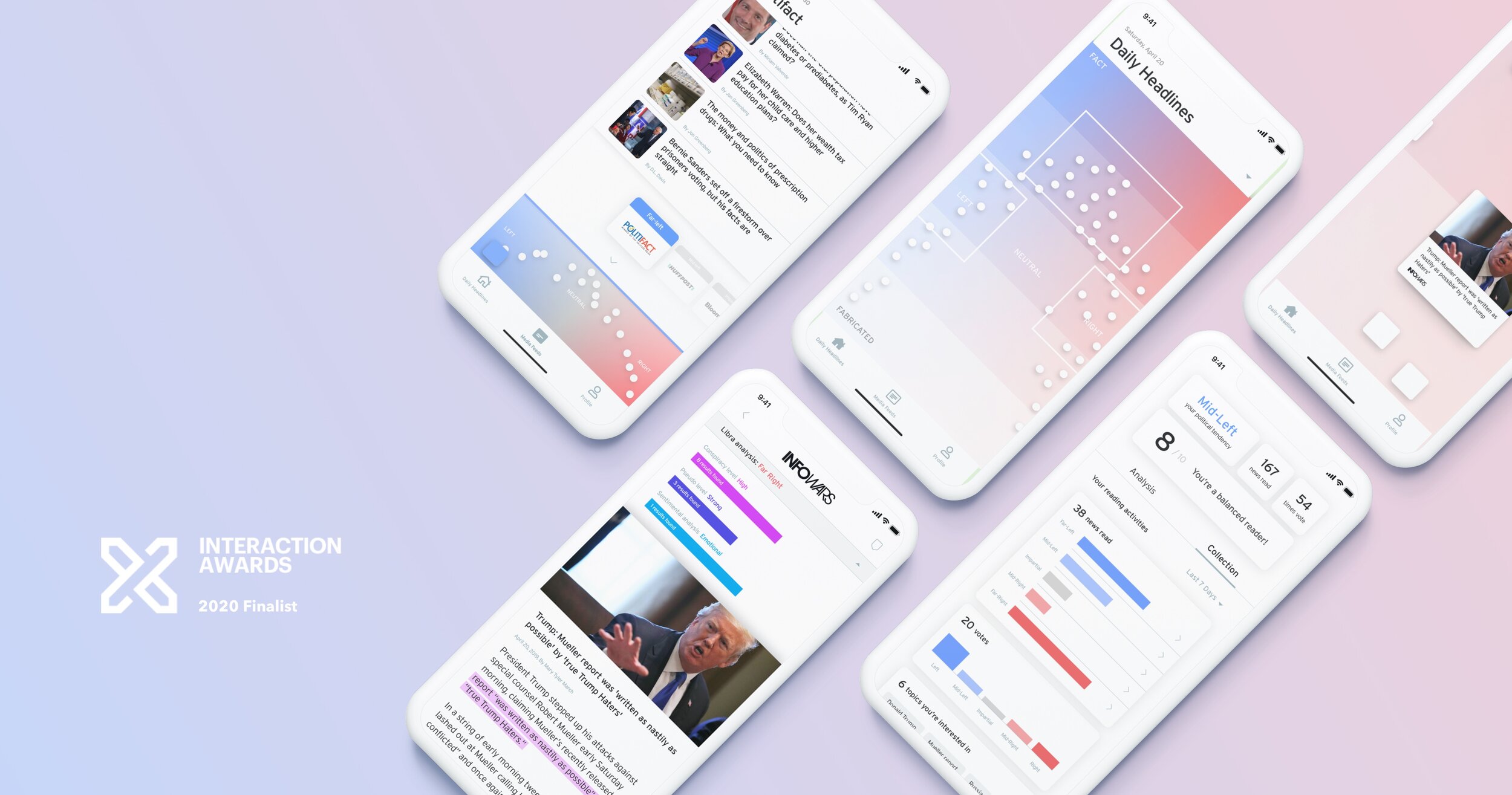FiDO / enhancing trust between driver and AI system in semi-autonomous vehicles
Team
Company | Institution
Category
Type
Project description
FiDO is a circular physical interface connected with a mobile app, which is a plug-in to different semi-autonomous vehicles. FiDO collects driver data and traffic information to give personal recommendations. Consequently, drivers can provide active feedback by rotating FiDO during their drive. This entire process is represented in purple and blue gradients to communicate what the vehicle is processing.
A digital screen placed on top of FiDO shows visuals with colour gradients. This visual translates how an AI algorithm inside the vehicle operates with some degree of honesty. When FiDO receives positive feedback from the driver, it shows a purple gradient as the driver rotates it and a blue gradient for negative feedback.
Once FiDO passively collects data from different sources, it will provide personal recommendations. The driver rotates FiDO to the right if they liked them and vice versa. FiDO will actively learn from the driver’s feedback and improve its personalisation feature. For the driver, the physical interaction with FiDO will enhance their attachment to the AI algorithm, which is something abstract and intangible.
After the journey, a mobile app linked to FiDO provides details of the drive. Along with collected data and recommendations from FiDO, the app creates a visual representation called “Dialogue Sphere.” This poetic representation illustrates the relationship between FiDO and driver into gradients, establishing a ground for drivers to achieve human intuition.
FiDO is a future proof of concept that will be a plug-in in semi-autonomous vehicles, which are vehicles in conditional and high automation where driver interventions are needed only in emergencies. FiDO targets this area since vehicle automation becomes more problematic when it tackles the middle of the autonomy spectrum. However, majority of the automotive industry is aiming straight into full automation instead of tackling the middle ground. Furthermore, although full automation is already in use in some environments, trust is currently developed only from an R&D perspective. Thus, FiDO sets a setting where trust can derive from the driver by humanizing AI. A general procedure of collecting data, creating algorithms, and providing personalized content translates into poetic visual graphics in FiDO. Light color gradients in purple and blue that are not too invasive add a human touch and welcome the driver into understanding the AI algorithm and the semi-autonomous vehicle.
The main users of FiDO are drivers who are not used to an autonomous vehicle and those who are skeptical about the technology. For secondary users, they started driving an autonomous vehicle and are in their onboarding stage. The onboarding phase of drivers using this automation technology plays a crucial role in establishing their personal perception of safety. Drivers may still perceive that the vehicle is not completely safe, apart from the fact that the semi-autonomous system has gone through numerous safety experiments from the manufacturing side. Therefore, this project not only tackles driver and vehicle trust, but also a smooth implementation process of automation technology in driving.
FiDO’s impact lie on the societal significance of autonomous vehicles. Especially related to UN SDG 11 to achieve sustainable cities and communities, this technology contributes to flexibility in personal mobility and environmental sustainability. However, in order to implement this into our daily lives is still questionable. Despite current autonomous vehicles in the market such as Tesla’s Full Self Driving, there are also a lot of accidents. Starting from Tesla’s deadly crash with a truck in 2016 and Uber’s self-driving vehicle killing a pedestrian in 2019, the technology needs a lot of supervision and incremental adoption measures. In order to move into a smooth transition to this automation technology despite all the accidents, FiDO will be an important stepping stone in implementing this change into our daily lives.
FiDO involves industry experts in the process in addition to participatory design methodologies. With Volvo Cars as a collaboration partner, various experts, such as UX designers, UX engineers, and ADAS project managers, were involved in interviews and workshops. Also, other experts from the mobility industry, such as NIO or airplane pilots, were involved to deliver a broader view of mobility. This project included users through participatory design methodologies, in which they provided different inputs on how they perceive and experience vehicle automation. As a result, there were noticeable differences in interpretations of trust for users and the industry and FiDO tries to find the middle ground by addressing both needs.
A digital screen placed on top of FiDO shows visuals with colour gradients. This visual translates how an AI algorithm inside the vehicle operates with some degree of honesty. When FiDO receives positive feedback from the driver, it shows a purple gradient as the driver rotates it and a blue gradient for negative feedback.
Once FiDO passively collects data from different sources, it will provide personal recommendations. The driver rotates FiDO to the right if they liked them and vice versa. FiDO will actively learn from the driver’s feedback and improve its personalisation feature. For the driver, the physical interaction with FiDO will enhance their attachment to the AI algorithm, which is something abstract and intangible.
After the journey, a mobile app linked to FiDO provides details of the drive. Along with collected data and recommendations from FiDO, the app creates a visual representation called “Dialogue Sphere.” This poetic representation illustrates the relationship between FiDO and driver into gradients, establishing a ground for drivers to achieve human intuition.
FiDO is a future proof of concept that will be a plug-in in semi-autonomous vehicles, which are vehicles in conditional and high automation where driver interventions are needed only in emergencies. FiDO targets this area since vehicle automation becomes more problematic when it tackles the middle of the autonomy spectrum. However, majority of the automotive industry is aiming straight into full automation instead of tackling the middle ground. Furthermore, although full automation is already in use in some environments, trust is currently developed only from an R&D perspective. Thus, FiDO sets a setting where trust can derive from the driver by humanizing AI. A general procedure of collecting data, creating algorithms, and providing personalized content translates into poetic visual graphics in FiDO. Light color gradients in purple and blue that are not too invasive add a human touch and welcome the driver into understanding the AI algorithm and the semi-autonomous vehicle.
The main users of FiDO are drivers who are not used to an autonomous vehicle and those who are skeptical about the technology. For secondary users, they started driving an autonomous vehicle and are in their onboarding stage. The onboarding phase of drivers using this automation technology plays a crucial role in establishing their personal perception of safety. Drivers may still perceive that the vehicle is not completely safe, apart from the fact that the semi-autonomous system has gone through numerous safety experiments from the manufacturing side. Therefore, this project not only tackles driver and vehicle trust, but also a smooth implementation process of automation technology in driving.
FiDO’s impact lie on the societal significance of autonomous vehicles. Especially related to UN SDG 11 to achieve sustainable cities and communities, this technology contributes to flexibility in personal mobility and environmental sustainability. However, in order to implement this into our daily lives is still questionable. Despite current autonomous vehicles in the market such as Tesla’s Full Self Driving, there are also a lot of accidents. Starting from Tesla’s deadly crash with a truck in 2016 and Uber’s self-driving vehicle killing a pedestrian in 2019, the technology needs a lot of supervision and incremental adoption measures. In order to move into a smooth transition to this automation technology despite all the accidents, FiDO will be an important stepping stone in implementing this change into our daily lives.
FiDO involves industry experts in the process in addition to participatory design methodologies. With Volvo Cars as a collaboration partner, various experts, such as UX designers, UX engineers, and ADAS project managers, were involved in interviews and workshops. Also, other experts from the mobility industry, such as NIO or airplane pilots, were involved to deliver a broader view of mobility. This project included users through participatory design methodologies, in which they provided different inputs on how they perceive and experience vehicle automation. As a result, there were noticeable differences in interpretations of trust for users and the industry and FiDO tries to find the middle ground by addressing both needs.

